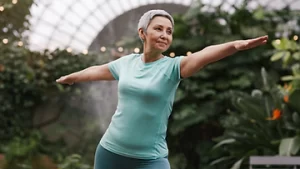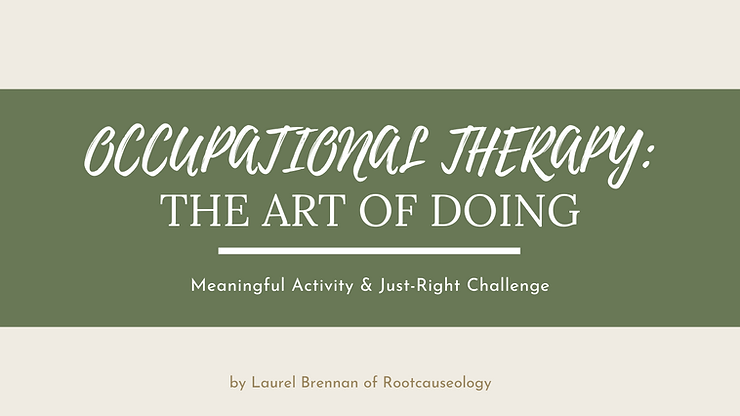It’s not yet 8:00 am and so far today I have performed too many tasks to list but I’ll start with the first few seconds:
- I heard a bird chirping through the open window (auditory processing: auditory nerve and temporal lobe) so deduced that it was probably morning and not the middle of the night as my blackout curtains may have led me to believe. (Executive functioning: prefrontal cortex and frontal cortex).
- I noticed my bladder could use some relief but didn’t urinate in the bed indicating that the neural circuits running from the cerebral cortex to the bladder are intact and fully functioning.
- I engaged my sternocleidomastoid to rotate my head to see my phone and then my supraspinatus, deltoid, teres minor and infraspinatus to begin to reach for it. My motor cortex in the frontal lobe was responsible for the movement and the cerebellum helped fine-tune this movement.
You get the idea.
As an occupational therapist, I do not spend my day performing this type of analysis constantly but the ability to perform activity analysis is unique to occupational therapy and I feel lucky to have found this career over two decades ago. It gave me the opportunity to blend my many interests and celebrated my love of people, human behavior, health and fitness, science, and the desire to be creative.
“Occupational therapy is a client-centred health profession concerned with promoting health and well being through occupation. The primary goal of occupational therapy is to enable people to participate in the activities of everyday life. Occupational therapists achieve this outcome by working with people and communities to enhance their ability to engage in the occupations they want to, need to, or are expected to do, or by modifying the occupation or the environment to better support their occupational engagement.” (WFOT 2012)
The Just-Right Challenge
It would be totally impractical and counterproductive if when treating a patient or client, I shared the ongoing play-by-play of the activity analysis in which they were engaged as part of their therapy. But what is critical is that I set up the therapy to create a just-right challenge so that the task they are performing is not too easy and not too hard.
For example, I would not ask someone with mid-stage dementia to plan a 5-course meal or someone with advanced Parkinson’s to join an advanced Vinyasa yoga class in their community. In the same way, I would not ask one of my yoga athletes at the studio to show me how they put on their shoes.
Meaningful Activity
Many years ago, my great-uncle, Bill, was in in-patient rehab recovering from a cardiac event and his occupational therapist (OT) had him cooking for one of his sessions. The problem with this as a treatment session was that he NEVER cooked at home. He lived with his independent and capable wife who did the cooking or they went out to eat. So forcing him to cook to “get out of rehab and go home” was not only not necessary but it made him angry and question the field of occupational therapy entirely. The same skills (balance, activity tolerance, safety awareness, planning, and judgment) could have been addressed by doing something that Bill loved–woodworking or anything having to do with trains. Unfortunately, this particular OT did not focus on finding meaningful activity at least in this scenario.
 In order to create meaningful activity, it is critical to get to know the patient or client. What do they like? Who are they? If they cannot recall or communicate effectively due to cognitive decline or other issues, finding out details from the family is imperative.
In order to create meaningful activity, it is critical to get to know the patient or client. What do they like? Who are they? If they cannot recall or communicate effectively due to cognitive decline or other issues, finding out details from the family is imperative.
I have used yoga as a treatment modality to address static and dynamic balance with many patients who already loved yoga or wanted to give it a try. One 90-year old grandmother couldn’t wait to call her great-granddaughter and tell her that she did yoga for therapy following a hip replacement.
 One of the first patients that I treated with early-stage dementia was absolutely thrilled to help make a lemon meringue pie that reminded her of her own grandmother. She was new to the assisted living facility and planning and completing this activity helped her to get oriented to her new surroundings.
One of the first patients that I treated with early-stage dementia was absolutely thrilled to help make a lemon meringue pie that reminded her of her own grandmother. She was new to the assisted living facility and planning and completing this activity helped her to get oriented to her new surroundings.
Another nonagenarian with dementia in the assisted living facility taught me how to fold fitted
sheets because I shared that I had a closet full of lumpy piles of sheets and she loved to pass on her knowledge. After discharge, she helped the housekeeper do this on her laundry days. These activities reduced her anxiety and improved her mood.
Celebrate Occupational Therapy
Meaningful activity and a just-right challenge are guiding principles no matter the environment where I am working now. My background as an occupational therapist is something that I am proud of and it has helped me to become a better health coach, yoga teacher, and functional medicine practitioner.
April is occupational therapy month and I would like to give heartfelt thanks to my mentors who have inspired me and certainly many others.
Thank you to Dr. Sally Shultz, my professor, advisor, and co-presenter, who helped me see the genius of occupational therapy and gave me a frame of reference to guide my thinking and treatment. Check out her original work on Occupational Adaptation.
I had the great privilege of working in Scotland, UK for the National Health Service. Kate Stoker was my mentor who helped me first become comfortable working within the dementia population.
Learn More
If you want to learn more about Occupational Therapy as a career or how meaningful activity blended with the just-right challenge can help you, check out The American Occupational Therapy Association (AOTA) or the World Occupational Therapy Federation (WFOT).
